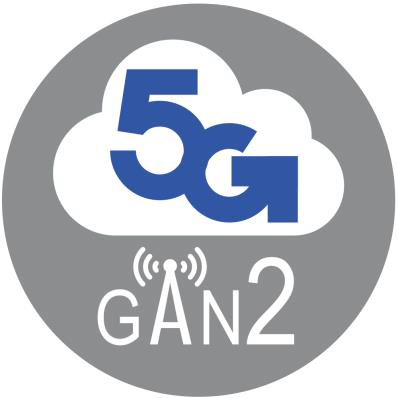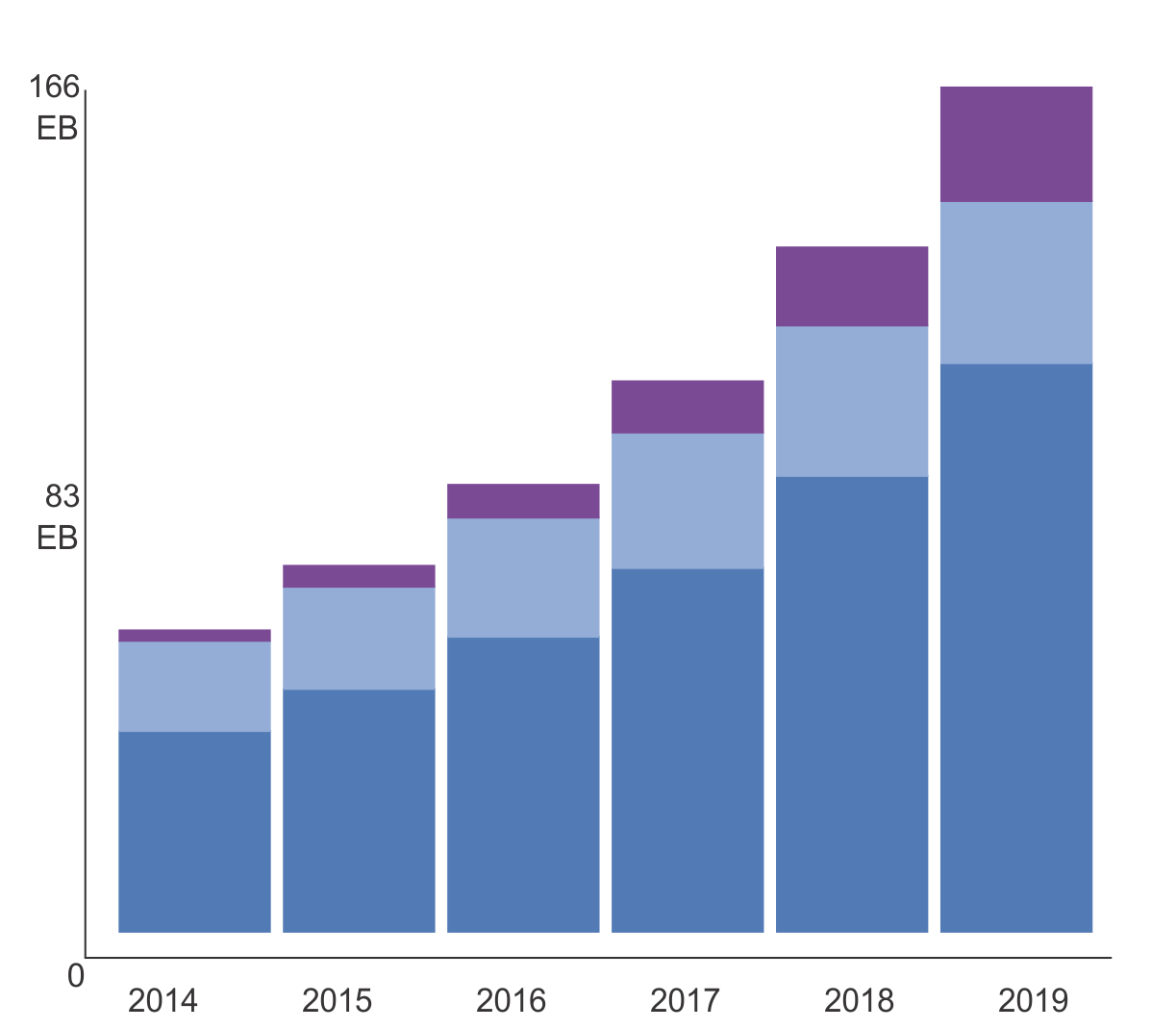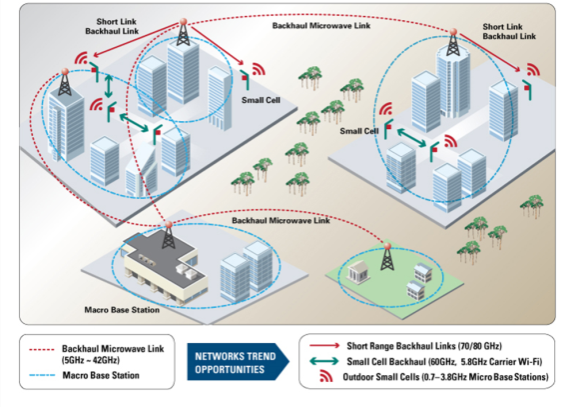 |
2Motivation |
 |
The communication network will undergo tremendous changes in the future years, in relation with 2 main drivers:
- Strong increase of data linked to new demand trends: high resolution video, virtual and augmented reality etc.
- Emergence of the Internet of Things (IoT), considered as the “3rd wave of internet” with 30 billion devices to be connected by 2020.
The data per month is expected to double from 2016 to 2019, reaching 166 exabytes in 2019 (Source: Cisco VNI Mobile, 2016, see graph hereafter on Figure 2.1).

Fig. 2.1: Forecast global IP traffic per Month of Data (Source: Cisco VNI Mobile, 2016)
It appears in this graph that, among the different types of data (fixed internet, managed IP and Mobile data) mobile data will undergo the highest growth, with a CAGR of 53% from 6.2 exabytes in 2016 to 30.6 exabytes in 2019. To cope with such growth and with the deployment of new type of devices and applications, modifications to the network appears essential, in particular to better support features like: low latency, better coverage, multi-standard compatibility, high power efficiency, high reliability and dependability.
As a consequence, the use of RF transceivers is expected to undergo radical changes in the future years with the use of higher frequency and larger bandwidth. A typical coverage scheme is shown in Figure 2.2.

Fig. 2.2: The Evolution & Economics of E-Band for Wireless Backhaul (Source: D.Richardson, Product Line Director, Wireless, MACOM)
The RF network relies on different types of “cells” (i.e. RF transceivers) designated in relation with the radius / range:
- Femtocell: 10 m
- Picocell: 200 m
- Microcell (or metrocell): 2 km
- Macrocell: 10 km
While the femto/picocells needs will be mostly covered by the CMOS or bi-CMOS technology (and its foreseen evolution), micro/macrocells needs are much more challenging in terms of frequency, bandwidth, power, power efficiency and linearity.